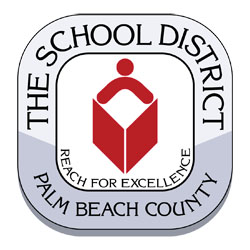Judith McInnes of the Palm Beach County School District’s Student Intervention Services gave a presentation at the Royal Palm Beach Education Advisory Board meeting Monday on how the district attempts to keep homeless students on course.
The presentation came about after Royal Palm Beach High School student representative Garrett Johnson gave a report last month on a project with the Florida Association of Student Councils called Helping Hands, which aims to support homeless students, coordinating with the Florida Coalition for the Homeless.
McInnes said the district has a homeless education program that seeks to keep the homeless students’ environment as stable as possible.
She said the face of homelessness is much broader than the stereotype of people panhandling at intersections. “It could be your neighbor; it could be the secretary at the school,” McInnes said.
Student Intervention Services offers services including health and foster care, a teen parent program and homeless education services.
“The School District of Palm Beach County’s Homeless Education Assistance Program Resource Team carries out the federally mandated policies to ensure that homeless children and teens have free access to appropriate public education,” McInnes explained.
The program is under the auspices of the McKinney-Vento Homeless Education Assistance Act, a federal law that ensures immediate enrollment and educational stability for homeless children. “It is not an option, but a mandate to address those students,” McInnes said.
She said that perceptions of homelessness, often inaccurate, drive the types of services that are provided within the schools and community.
“They say that most people are two paychecks away from being homeless,” she said, explaining that homelessness does not define the student. “Our students are artists, they’re athletes, they’re graduates, they’re surfers, and so many times when we look at the label of homelessness, that becomes their description. Homelessness is a temporary situation, and what we find is that most of the families that we work with are first-time homeless.”
Homelessness in many cases in Palm Beach County is caused by home foreclosure, lack of affordable housing and domestic violence.
Students then find themselves living in many different housing situations, McInnes said. “We have families living in cars. We have families that are homeless because of natural disasters, whether it be a fire or a hurricane,” she said. “We have families that are currently dwelling in motels, in local campgrounds and in our shelters.”
More than 3,000 homeless students were identified last year, she said, although the number is probably greater than that. “The majority of the families are living in sheltered situations,” McInnes said. “Right now there are very few emergency shelters, transitional programs around the country, so when this bill was modified, it is now including the sheltered.”
The growing groups that have been noticed over the past couple of years are unaccompanied youth or teens who are no longer living with a parent or legal guardian. “What we find is that these students are often couch-surfing or doubled up,” McInnes said.
It is estimated that 10 percent of all children experiencing poverty or who receive free or reduced-price lunches will experience homelessness over the course of a year, she said. About 102,000 students receive free and reduced-cost lunches.
“Take 10 percent of that number, and that could be the number of homeless students in Palm Beach County,” McInnes said.
The definition of homeless under No Child Left Behind is sharing the housing of others due to economic hardship or natural disaster.
“We have families that are living in transitional programs,” she said, pointing out that Palm Beach County does not have emergency housing. “The transitional programs could be family, domestic violence and youth shelters. We have families currently living in motels due to lack of permanent housing.”
Programs such as Rapid Rehousing administered under the American Recovery and Reinvestment Act of 2009 have helped homeless families and those about to face homelessness recover from their situation, McInnes said, although there are families living in cars, under bridges and in local campgrounds.
“We also classify McKinney-Vento kids as those living in substandard housing,” McInnes said. “Questions to ask are, Does your dwelling have heat? Electricity? Does it have windows? Are you currently living in overcrowded conditions? Families of four in one bedroom expected to share bathrooms and maybe a living room with three other families?”
The McKinney-Vento Act addresses three areas: school access, school stability and academic success.
“What they found under the No Child Left Behind Act was that there were still children being left behind, and those were homeless,” McInnes said. “They found that transportation was one of the greatest barriers that kept these children from succeeding.”
Many homeless families move from address to address in the course of a year, and the McKinney-Vento Act assures that the student can remain in one school.
“When students move from one school to another school, they can lose between four and six months of academic stability,” McInnes said. “One of the goals for McKinney-Vento and Palm Beach County is one school, one year.”








